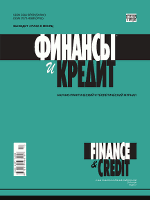Abstracting and IndexingРИНЦReferativny Zhurnal VINITI RAS Worldcat LCCN Permalink Google Scholar Online availableEastvieweLIBRARY.RU Biblioclub |
Futures contracts: calculating the efficiency of procurement activities hedging of enterprises
Available online: 23 November 2014 Subject Heading: Financial management JEL Classification: Pages: 10-18
The article emphasizes that adequate risk management is not only a means for increasing economic efficiency of companies, but it also provides for their operations in the market in general. The easiest way to limit or eliminate market risk is using derivative financial instruments. Elementary derivative contracts are in the group of the so-called linear derivatives, i.e. forwards, futures and swaps. More complex derivatives, such as options, are conditional in payment, which is a nonlinear function of the underlying asset. These assets are flexible to use, and their combination can create a desirable profile of investor's return. Not every exchange-traded instrument can be eligible for hedging. In addition to necessary correlation relationships to satisfy hedger's needs, the exchange market has to provide a sufficient number of required assets to implement an exchange transaction. Due to non-availability of necessary volumes of exchange assets, some hedging strategies can be subject to rejection even if theoretically they are capable to ensure desirable level of protection against risks. The authors have investigated economic feasibility of applying futures for procurement activities hedging at the enterprises of non-financial sector. In the modern world any instrument protecting against risks has a price. Based on the price to method efficiency ratio, a specific risk management method is chosen. To find out the degree of reliability of the applied protection and its efficiency it is necessary to make a statistical analysis of the studied indicators. The scope of the considered method has no distinct boundaries. Dynamic development of hedging instruments enables to use it in various sectors of economy. Keywords: market risk, hedging, tools, instruments, efficiency, construction References:
|
ISSN 2311-8709 (Online)
|
|








